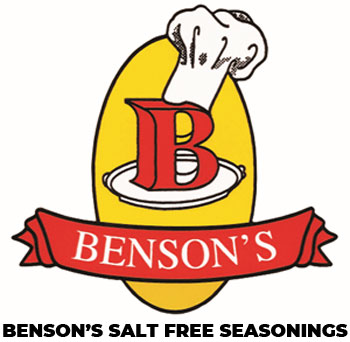When you are starting a low sodium diet, you are told “no more salt”. Most low sodium diets are limited to 2000 mg (milligrams) to 1000 mg of sodium per day, sometimes even lower. Limiting your sodium to 2000 mg is not really all that hard once you learn what to do and change your habits. According to nutritional labels, a healthy person is allowed 2400 mg of sodium per day. It’s just realizing that most folks are eating way too much sodium, daily.
Using too much salt, especially on a daily basis is asking for trouble. It just makes your heart and other organs, like your kidneys, work too hard. When your organs must work too hard, day-in and day-out, it seems like they just start to wear out and start having problems, or worse, they give-up or stop. If you have cooked with salt your whole life, you may feel lost. It seems that everything in your cupboard has salt listed as the first ingredient. What to do?
Here are a few helpful tips to use, especially when first starting a low sodium diet.
- Take the salt shaker off the table. Most folks don’t realize how much sodium they are shaking on their food. 1 teaspoon of salt equals about 2400 mg of sodium. That makes 1/4 teaspoon (a suggested serving size) about 600 mg of sodium. If you measure out a 1/4 teaspoon of salt into your hand, you will see just how little it is, but understand how much sodium it has.
- Don’t cook with salt. Again it is very easy to over salt your food while you are cooking. Most cooks don’t measure salt when they are cooking. You could easily go over your daily sodium intake in just one meal. This isn’t even counting the sodium in other foods you are eating throughout the day.
- Get a salt substitute. For most folks this is logically the next step. Try to find something to replace the salt. This can be a big problem. Most salt substitutes are made of potassium chloride. Many folks on a low sodium diet, have started on medications that say “no salt substitutes”, because of the potassium chloride. Light salts are usually a combination of potassium chloride and salt. It is easy to be using too much of a light salt as you can be shaking on more than you should and your sodium is not being restricted.
So now what are you going to do? Your food tastes bland. You think, no salt equals no flavor. Now you also may be having some salt cravings. You just miss the salt taste. You may be thinking there is no hope. Yes, there is hope.
- Look for salt free products, no salt products, no salt added products, low sodium products, and for most of you, make sure they are not using potassium chloride. Most low sodium products you will find potassium chloride in the ingredient list.
- Learn new ways to prepare your food without salt. The first big step is learn to flavor your food with salt free seasonings. Use good quality, salt free seasonings preferably without potassium chloride. They are not all created equal. Try freshly ground black pepper from a pepper grinder or pepper mill, (not from a can) for increased flavor. Almost any fresh culinary herb (like parsley, cilantro, basil, rosemary, thyme, mint, etc) will help add good flavor. Try different chilies, and spices. Make sure to use plenty of seasoning to get enough flavor.
- There are natural salt substitutes available. Some taste good, some don’t. Most foods with a sour taste or a tangy flavor or a sharp bite, will help give a more salty taste. Lemons and limes help give a salty taste. Vinegars, of which there are many (not seasoned rice vinegar as it has salt), will help give a salty taste as well.
Remember these tips and know there is hope. Know that you can enjoy flavorful food on a low sodium diet.
